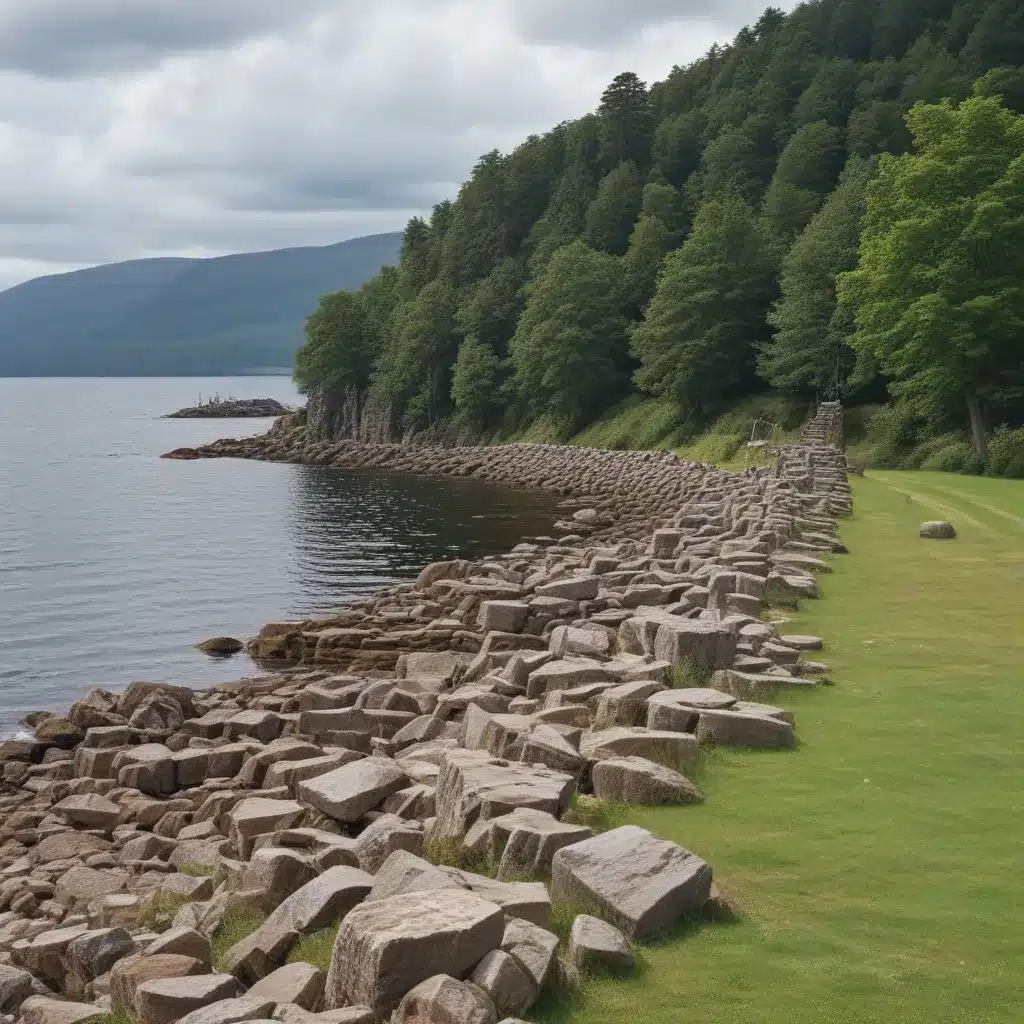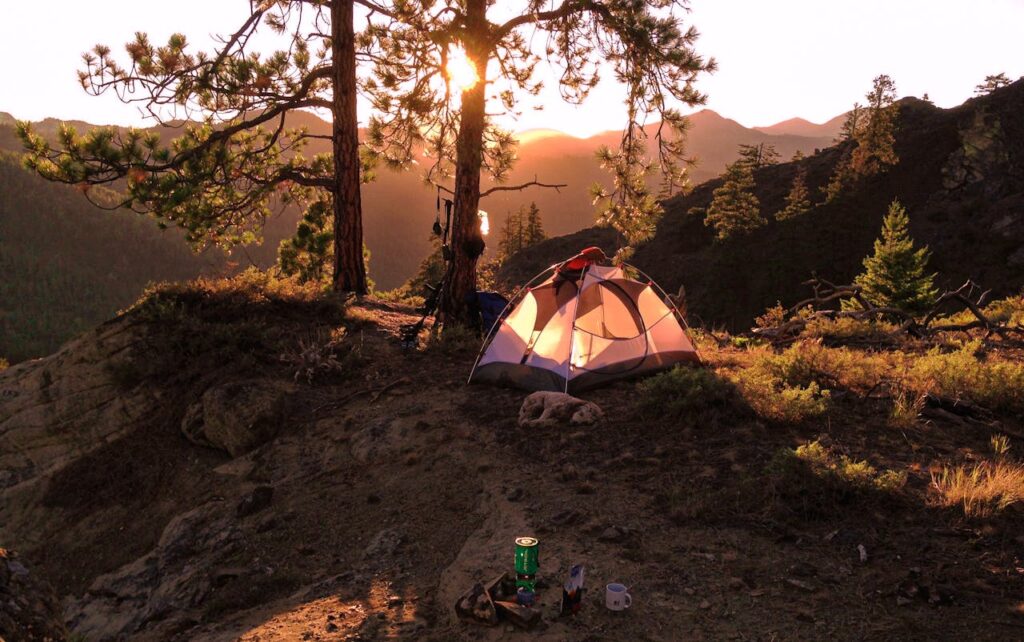
Discovering the Haunting Allure of Loch Ness
As the vibrant hues of autumn begin to fade, and winter’s icy grasp looms, I find myself drawn once more to the captivating shores of Loch Ness. This enigmatic body of water, nestled amidst the rugged splendor of the Scottish Highlands, has long held a magnetic allure, luring visitors from far and wide to uncover its mysteries.
Even in this strangest of years, the deep, dark waters of Loch Ness have a way of casting their spell, offering a rare respite from the chaos of the world beyond. As I stand on the banks, gazing out over the vast, gloomy expanse, the hush is almost palpable, save for the occasional whisper of the wind and the faint, elusive stirrings that fuel the legend of the Loch Ness Monster.
It is in these tranquil moments that the true essence of the Highlands begins to reveal itself – a land of rugged beauty, haunting history, and a sense of timelessness that lingers long in the memory. And nowhere is this more evident than in the ruined castles and abandoned settlements that dot the shoreline, each with its own captivating tale to tell.
Uncovering the Turbulent Past of Urquhart Castle
As Highland strongholds go, Urquhart Castle stands tall, both literally and figuratively. Dramatically perched on the banks of Scotland’s most famous loch, this ruinous fortress has become one of the country’s leading visitor attractions, its tumultuous history etched into every crumbling stone.
The castle’s origins can be traced back to the late 13th century, when it passed from the Durward family into the hands of the powerful Comyn clan. It was under the Comyns’ rule that Urquhart was transformed into the formidable stronghold we see today, a strategic outpost that would witness a constant flurry of activity in the centuries to come.
From the clutches of Edward I of England to the ownership of Robert the Bruce, Urquhart Castle was at the heart of the turbulent power struggles that shaped Scotland’s history. It served as a base for government forces during the Jacobite uprisings and endured the ravages of war, until its final destruction in 1692 as the departing government troops sought to deny its future use.
Today, the castle stands in pensive silence, its weathered walls and crumbling towers a testament to the resilience and endurance of the Scottish spirit. As I wander through the ruins, I can almost feel the weight of history pressing down upon me, the whispers of the past echoing through the empty halls.
The Serene Beauty of Loch Ness’ Eastern Shores
While Urquhart Castle commands the attention with its dramatic presence, it is in the more serene stretches of Loch Ness’ eastern edges that the loch’s true personality begins to reveal itself.
From the Suidhe Viewpoint, the sprawling panorama unfolds – the varied terrain, the brooding mood, the emptiness. This is the romance of the Highlands, where a gust of wind can rock you off balance, where the mist seems to seep into your very bones, and where the centuries-old stories of human endurance and reflection play out in a merry Highland dance before your eyes.
It is a blank canvas, waiting to be filled with our own imagination and experiences. And as I stand there, taking it all in, I’m reminded of the words of Loch Ness Shores, a local campsite that captures the essence of this enchanting region: “Not much needs to be happening here, for a lot to be happening here.”
The Falls of Foyers, just a short distance away, offer a more tangible treat for the senses. The journey begins with a clear woodland path from the village, leading down to the thundering 165-foot cascade. But the true magic lies in following the River Foyers all the way to the lochside, where the river’s wild energy meets the brooding calm of the loch itself.
Exploring the Dramatic Waterfalls of the Highlands
As I venture further west, the landscape only grows more dramatic, a tapestry of rugged beauty that has captivated visitors for centuries. Dog Falls, nestled deep within the Caledonian pine forest, is a prime example – a narrow gorge through which the River Affric flows, its roar punctuated by the cries of unseen wildlife.
But the true showstopper lies to the southwest, where the Plodda Falls spill over a precipice from a height of more than 150 feet. Here, in the heart of a Douglas Fir forest, the cascading water is spewed forth in a mesmerizing display of raw power and natural beauty.
These lands were once the domain of Lord Tweedmouth, Dudley Marjoribanks, whose vast estate included the birthplace of the Golden Retriever. Though the grand Guisachan House now lies in ruins, the legacy of this iconic dog breed lives on, with a roadside statue in the nearby village of Tomich commemorating its origins.
Enchanted Woodlands and Historic Priories
As I navigate the winding roads of the Highlands, I’m continually drawn to the allure of the region’s ancient woodlands, each one offering a unique and captivating experience. Moniack Burn, just 20 minutes west of Inverness, is a particular favorite – a 1-hour loop trail that winds alongside the fast-flowing stream, with towering firs casting an almost chilling atmosphere over the scene.
Further afield, the woodland trails surrounding Cawdor Castle are equally enchanting, with five separate nature routes to explore. Here, I find myself surrounded by colossal oak, birch, beech, and pine trees, with herons, wrens, and red squirrels as my silent companions.
And let’s not forget the impressive Beauly Priory, a 13th-century marvel that has long captivated visitors, including the legendary Mary, Queen of Scots. This sombre yet tempting structure serves as a focal point for the picturesque village of Beauly, a testament to the region’s rich history and enduring allure.
Unlocking the Mysteries of the Highlands
As the long, uncertain winter looms, I can’t help but find myself drawn to the enigmatic cairns that lie just to the east of Inverness, mere minutes from the sobering war grave of Culloden. These Bronze Age burial sites, with their standing stones and air of mysticism, have long been a source of fascination, sparking the imagination and fueling the legends that have come to define this remarkable region.
It was through these very stones, after all, that the time-traveling heroine of the Outlander novels, Claire, embarked on her tumultuous journey. And as I stand amidst the ruins, I can’t help but wonder if the possibility of such a fantastical occurrence might not be as far-fetched as it seems.
The Scottish Highlands, with their haunting ruins, dramatic waterfalls, and enchanted woodlands, are a land of enduring mystery and captivating allure. And as I prepare to depart, I know that this is but the beginning of my exploration, a mere glimpse into the rich tapestry of stories that await those who dare to venture into the heart of this remarkable corner of the world.

